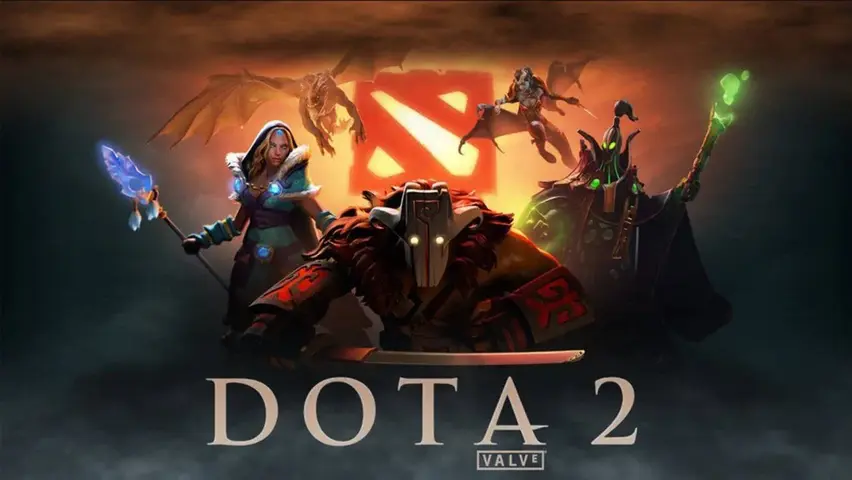
Dota 2 Offlane Guide How to Dominate the Hard Lane
What is an offlaner and what do they do, what responsibilities belong to this role? You will find the answer to this question and many others in this article. It is one of the most challenging positions in Dota 2, so let's start with the basics.
Who is an Offlaner in Dota 2?
The offlane is one of the most challenging and crucial roles in Dota 2. Offlaners play on the lane that is the most dangerous due to its proximity to the enemy base. This requires the player to be flexible, knowledgeable, and capable of making quick decisions. In this guide, we will cover the main aspects of playing the offlane, including hero selection, starting items, survival strategies, lane control, and teamwork.
Hero Selection
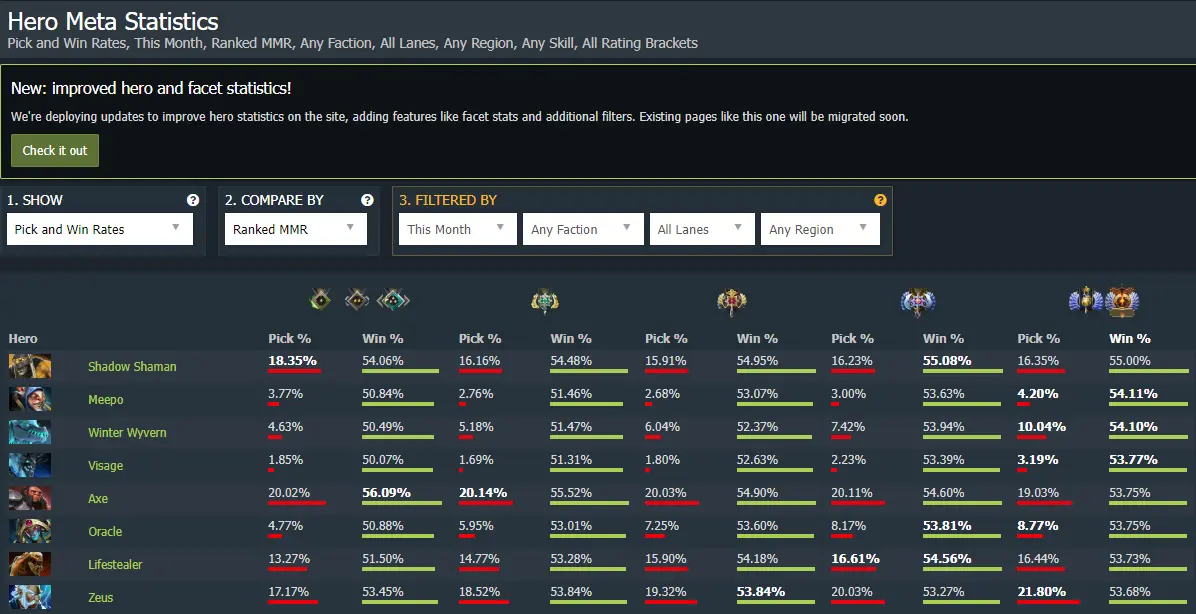
If you are a beginner, we recommend you to take a closer look at these characters:
- Tidehunter: A powerful initiator with a lot of armour and the AoE ultimatum ability Ravage.
- Bristleback: High endurance and damage thanks to Quill Spray and the Bristleback passive ability.
- Axe: A large tank with AoE control thanks to Berserker's Call and Culling Blade.
Not all of the examples given above are the strongest for this role, but if you are just planning to master this position, they will be useful due to their low complexity. Each of these heroes has their own characteristics and strengths that should be considered when choosing, depending on your team's composition and the opponent.
Innate Abilities and Facets
Note that after the latest major update, a new system was added to the game, which introduced a new ability for each character that is available from level one. Innate abilities are divided into two types. Some provide a permanent unique effect – for example, Dawnbreaker reveals the entire map at sunrise. Others add an additional level to a regular ability, making it available from the start – for example, Kunkka immediately has the Tidebringer ability and can level it up four more times. Another update was the Facet system. Facets allow you to choose the playstyle that best suits you or a particular situation. Each hero has at least two facets, and they can be changed before the game starts, including during the planning stage.
Let's analyze the Facet system using the hero Axe as an example. The character has two facets, namely One Man Army and Call out. Most players prefer the One Man Army facet because it increases the hero's strength based on his armor if there are no allies nearby. This facet also synergizes well with his innate ability, which provides additional permanent armor for each kill. This is a powerful combo that helps you initiate fights effectively and absorb a lot of damage. On the other hand, the Call out facet increases your enemy's attack speed while boosting your hero's armor for the duration. Call out does not provide any damage advantages to the enemy. Therefore, most players choose One Man Army.
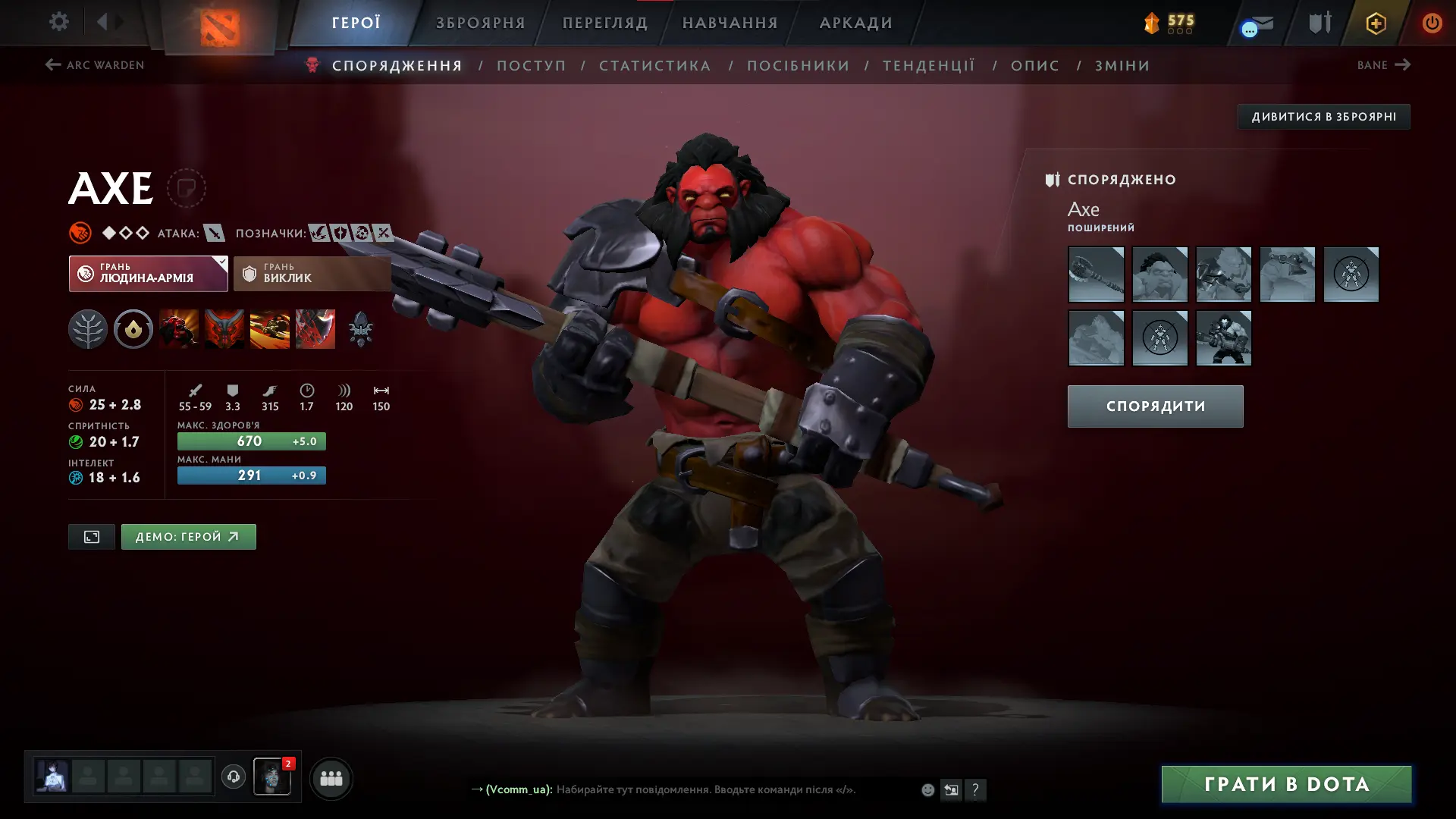
What is the right way to act at the draft stage?
Some people tend to pick first just because they don't want their hero to be chosen by the enemy team. But you don't want to be outplayed. By choosing first, you put yourself in danger before the game even starts, and in the end, you will become another creep on your team. Therefore, we recommend that you let your supporters choose first. This way, they won't choose a character you don't like against you. So, under no circumstances should you choose first.
Starter Items
So you've chosen your character, what's next? Starter items are critical to a successful start in the offline world. Usually, the initial purchase is different in each game session because each item has its own function and you need to adapt to your opponent. Below are the main options for the initial purchase:
- Tangoes and Healing Salve: Ensure survival on the line.
- Iron Branches: Provide a small increase in characteristics and can be used to create a Magic Wand.
- Quelling Blade: Helps to finish off creeps under enemy pressure
- Observer Ward: Allows you to see enemies and avoid ganks.
- Magic Stick: A great starter item against lanes where enemies often use abilities.
Difficulties During Laning
For most people, playing this position correctly is an extremely challenging task, which is why many become disillusioned with this role and switch to another. It is not for nothing that the Offlane is considered the most difficult position in the game. For beginners, we recommend reading the beginner's guide, which you can find on our website.
To play comfortably, you will need to master different setups on the lane. One of the most difficult tasks is playing alone against a trilane. A trilane is a tough lane where 2 support players try to kill you. You will need to be quite resourceful to be able to last-hit creeps, minimize the loss of gold and experience. There are also other types of setups where your position 4 will assist you (you can learn more about other roles by following this link). In this case, your task will be to minimize the enemy's farm and secure additional kills. You will need to share experience with your position 4 and figure out how to create the most pressure on the enemy carry.
Let's Analyze the Main Tips
- Zoning Enemies: Use your abilities and auto-attacks to keep enemies away from creeps
- Сontrol Over Last Hitting: Last-hitting creeps is key to gaining gold and experience. It's not easy to learn, but with enough practice, it won't be an obstacle on your path.
- Denying: Denying creeps is your task – be the most annoying hero in the session. It's very important to reduce the enemy carry's ability to farm. Without money, they won't get items, but don't get too close if it's too risky. You should aim to kill, take farm from the enemy, and constantly pressure them without dying. The worst thing you can do is give your opponent an advantage.
- Pulling Creeps: Use jungle camps to pull creeps and balance the lane.
These tips will help you control the situation on the lane. But what if things don't go according to plan and you need to think about your own survival? Let's analyze the four main principles that will be useful not only on the lane but also in the later stages of the game:
- Positioning: Try to position yourself so that enemies cannot easily attack you. Use the fog of war and the forest for safety.
- Creep Manipulation: Control the creeps in such a way that the lane stays closer to your tower.
- Harass: Use abilities and auto-attacks to reduce the health of enemy heroes without exposing yourself to great risk.
- Retreating to the Jungle: If the lane becomes too dangerous, move to the jungle to farm.
There are a few more things related to the laning phase, so let's tell you a bit about them
Bounty Runes
We think a little extra gold wouldn't hurt, right? Now imagine that this gold benefits the entire team. That's why bounty runes are so important. Capturing both runes is a crucial task. Additionally, you might secure some kills along with the gold from the rune, giving you a significant advantage on the lane. Bounty runes appear every 5 minutes. Therefore, a few seconds before they spawn, you should start moving towards the locations where these runes appear.
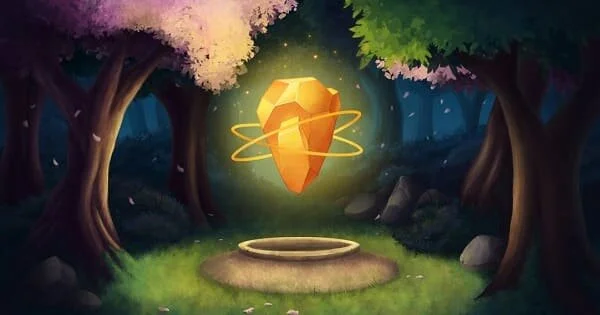
Lotus Lake
These are special ponds located on both sides of the map. They periodically generate lotus fruits that can be collected to get various bonuses. The fruits appear every 3 minutes and can be used to restore health and mana, making them valuable resources during the game. They are the ones you will fight for most of the time because they are very close to the line and are very important for both you and your opponents.
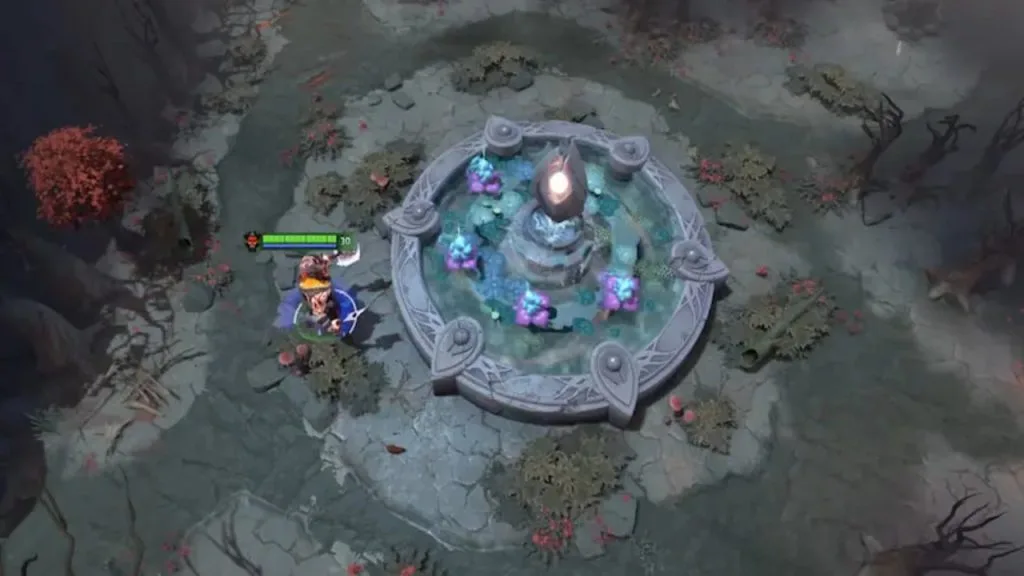
Timings in the Offlane
Exact timings cannot be provided, as each game session develops differently. Therefore, let's focus on other aspects. You need to stay on the lane until you get your first item. During laning, your position 4, if they are with you on the lane, will be pulling creeps and stacking the jungle for you. If you are alone on the lane, it is recommended to go to the jungle only if the lane is pushed, and you cannot reach the creeps on the lane.
So, you've got your first item. What next? If your lane is pushing or you have already defended your tower, consider rotating or teleporting to other lanes to assist with ganks, defend towers, or push. Start actively participating in team fights and initiate skirmishes.
In the late game, when you have the important items for your hero, you will almost always be looking for fights. Your role in team fights should be as effective as possible. Use your items and abilities to initiate and control enemies. After successful fights, help your team push enemy towers and barracks. And, of course, don't forget about Roshan, from whom you can obtain the valuable Aegis of the Immortal.
Jungle Camps
Let's delve deeper into the topic of the jungle. As you already know, you can earn gold not only from lane creeps but also in the jungle. Let's try to understand when it's time to go for these camps and in which situations. In the game, there are 3 types of camps: small, medium, and large. They differ in the amount of gold and experience gained from them.
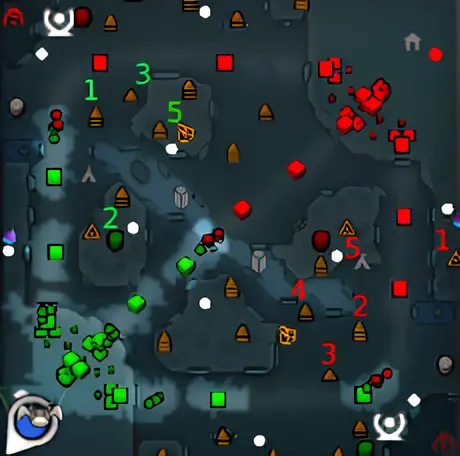
On the map, we have marked key camps that you will visit. Camps on the Dire side are indicated in red, and those on the Radiant side are marked in green. Let's start with the Dire side. The crucial camp you will contest (assuming the lane isn't too difficult) is camp number 2. We recommend going there if you successfully push the opponent under their tower, which gives you time before the next wave of creeps arrives to gain additional experience and gold.
Camp number 3 has a small advantage: it is very close to the enemy's lane, allowing you to farm creeps between the first and second towers. However, this is quite risky, so engage in this only if you are confident that you are outplaying the opponent in the lane. Camp number 1 is quite potent but is close to your tower, enabling you to safely gain a large amount of experience and gold while waiting for the next wave. Camps 4 and 5 are grouped into one category. These camps should be cleared when you have enough time to avoid losing creeps in the lane, typically when you have pushed the opponent deeply under their tower.
Now, moving to the Radiant side. The camp marked with number 1 is crucial because it is close to the lane. Typically, waves of creeps are pulled to this camp, so there will be constant contention for it. Camp 3 on the Radiant side is similar to its counterpart on the Dire side: it's challenging to farm due to its proximity to the enemy and their tower, but with complete domination, it allows you to steal enemy creeps even before they reach their tower. Camp number 5 can only be taken with full control of the lane and adequate vision provided by wards. Camp 2 on the Radiant side is usually taken when you are heavily pushed or there is still ample time before the enemy's wave of creeps reaches their lane.
Main Items
Let's move on to the main part of purchasing, the essential items that significantly impact engagements and more.
The core items for the majority of heroes are:
- Blink Dagger: For initiation and maneuverability.
- Pipe of Insight: To protect the team from magical damage.
- Crimson Guard: To reduce physical damage.
Next, situational items deserve attention. These items should be collected depending on the situation during the match or against specific opponents:
- Black King Bar (BKB): For protection against magical abilities during fights.
- Lotus Orb: Reflects negative effects onto enemies.
- Shiva's Guard: Provides additional defense and slows enemies.
Only high-cost items remain, which are worth collecting only when you have a significant gold advantage over the opponent:
- Refresher Orb: Allows for double use of abilities in fights.
- Heart of Tarrasque: Provides additional survivability.
- Assault Cuirass: Increases team armor and attack speed.
These are just basic item options and will vary depending on the hero you choose. We recommend familiarizing yourself with a guide for your chosen hero before starting to understand which items to buy and their purposes.
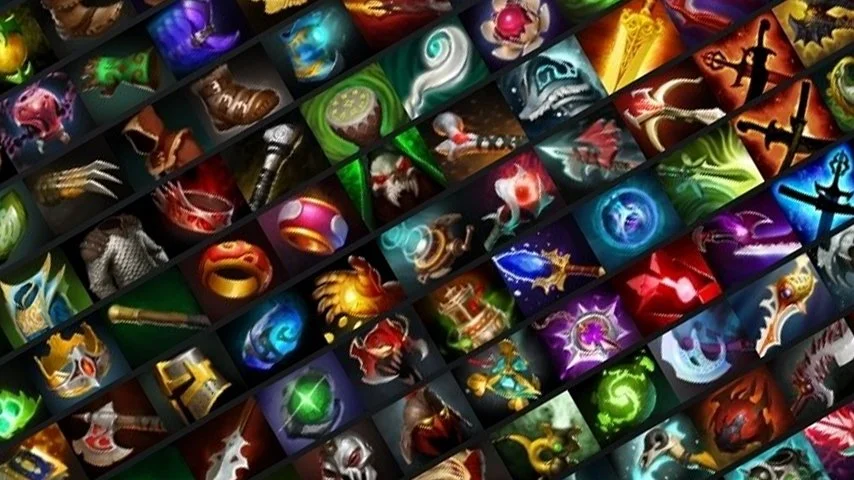
Tips and Advice from Professionals
Having absorbed all of the above and significantly improved your skills, we will share a few more tips and insights used by professional players.
Optimizing Jungle Farming
Understanding which jungle camps are most effective for your hero, and when it's better and under what conditions to start farming the jungle instead of staying in lane.
Working on Own Mistakes
Recognizing what you're doing right and what you're not is a step toward improvement. To excel as a Dota 2 offlaner, acknowledge what you did wrong at each phase of the game and rectify it before the next match. Use replays to analyze your games. Self-analysis and critique are better than blaming your team's mistakes.
Team Interaction
Actively using team chat and pings to communicate enemy status, runes, or readiness for fights. Coordinating with the team on rotations and ganks to maximize the effectiveness of your abilities. Don't hesitate to communicate with others because they can't read your mind. To prevent misunderstandings, it's best to discuss actions in advance. As an offlaner, you should actively plan your next move. Do this for yourself or even better, inform others about it.
Examples of Active Decision-Making:
"Okay, my ultimate is ready, I can go for kills with my supports." "We need to build more tanky items to protect our carry." "We just killed 2 enemy core players, we can push barracks."
Conclusion
Playing offlane in Dota 2 is a challenging yet highly responsible role that demands creativity, patience, and adaptability from the player. The offlaner must create space for the team, acquire necessary items, initiate team fights, and protect allies. To succeed in this role, mastering mechanics like creep pulling, choosing the right hero, and effectively controlling creep waves is essential. Understanding your role and responsibilities will allow you to better manage situations on a tough lane and help your team achieve victory. It's crucial not to give up even in difficult situations and always strive to improve your skills. Continuous analysis of your mistakes and strategic planning of movements will help you become a true offlane master. Remember, Dota 2 is a team game, and success depends on the collective efforts of the entire team.
Article info
Gaming
Upcoming Top Matches
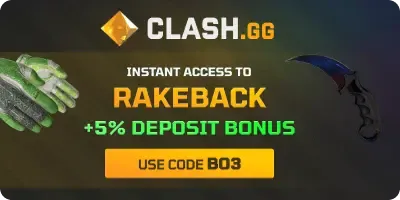












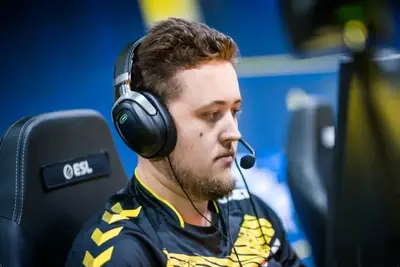

Comments